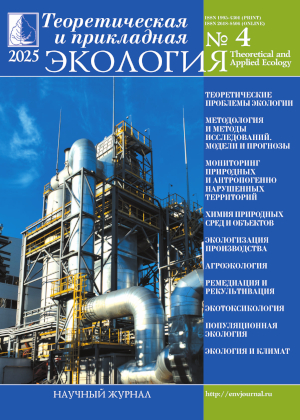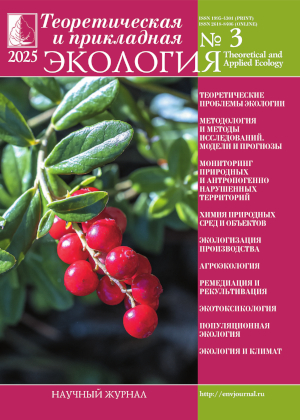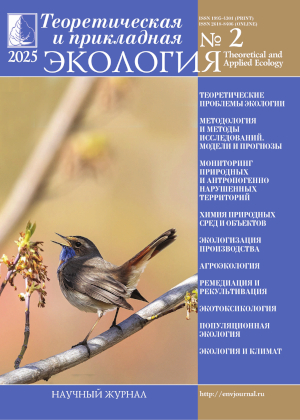 ISSN 1995-4301
ISSN 1995-4301(Print)
ISSN 2618-8406
(Online)
Online version of the journal
|
Ecophysiology of Heracleum sosnowskyi plant respiration in the north |
||||
| I.V. Dalke, R.V. Malyshev, S.P. Maslova | ||||
| Section: Population ecology |
||||
| Giant hogweeds are included in the invasive species blacklist and significantly affect the structure and diversity of plant and soil communities. The aim of the study was of the to reveal the giant hogweed (Heracleum sosnowskyi Manden.) plants adaptive capacity by investigation of seedlings and buds respiration rate. All measurements were performed in typical H. sosnowskyi population in the middle taiga subzone (North-east Russia, N 61.646063, E 50.759277). Plant seedlings begin to appear under the snow cover, in March (in the condition of study area), when the average air temperature is still negative (а multi-year average -7 °C). The seedlings (with radicles) respiration rate at 20 °C collected under the snow cover in March was near 0.7 mg CO2 / g dry weight h. The seedlings with the first true leaf had a significantly higher respiration rate (about 2 mg CO2/g dry weight h at 20 °C). We determined the shift in the temperature optimum for plant growth at the early stages of development in accordance with changes of environmental temperature conditions. The seedlings with first true leaf had respiration rate exponential phase at higher temperature (range 20–35 °C) than that of seedlings collected under snow (5–20 °C). The water-ice phase transition in the seedlings tissues was observed at the temperature minus 8 °C. Thus, seedlings are resistant to low temperatures in early spring. The buds of H. sosnowskyi plant formed by autumn on caudex, had a high rate of respiration of about 5 mg CO2/g dry weight h. Analysis of the rate respiration – temperature dependence revealed a high efficiency of buds respiration at low and moderate temperatures (5-15 °C). It may be associated with the morphogenetic processes in the bud tissues in the autumn-winter period when the soil freezes to minus 2 °C. It was shown that the young H. sosnowskyi tissues metabolism activity was in accordance with the soil and air temperature regime. This accordance allows the plants to adapt to the low temperatures in winter and provides a high growth rate in early spring. | ||||
| Keywords: Heracleum sosnowskyi, seedlings, buds, temperature, respiration, resistant |
||||
| Link | ||||
| Article published in number 2 for 2020 DOI: 10.25750/1995-4301-2020-2-077-082 |
||||
|
|
36, Moskovskya street, Kirov, 610000, Editorial Board "Theoretical and Applied Ecology." Phone/fax: (8332) 37-02-77 e-mail: envjournal@vyatsu.ru The journal was founded in 2007 |
||||||




 Select viewing options
Select viewing options